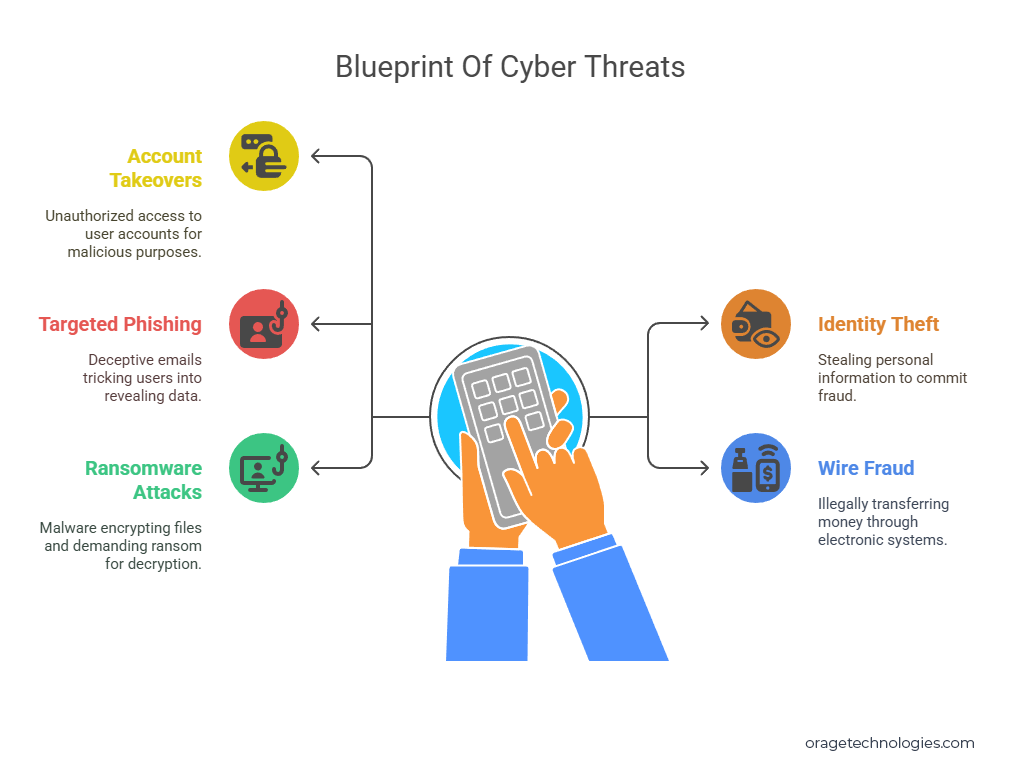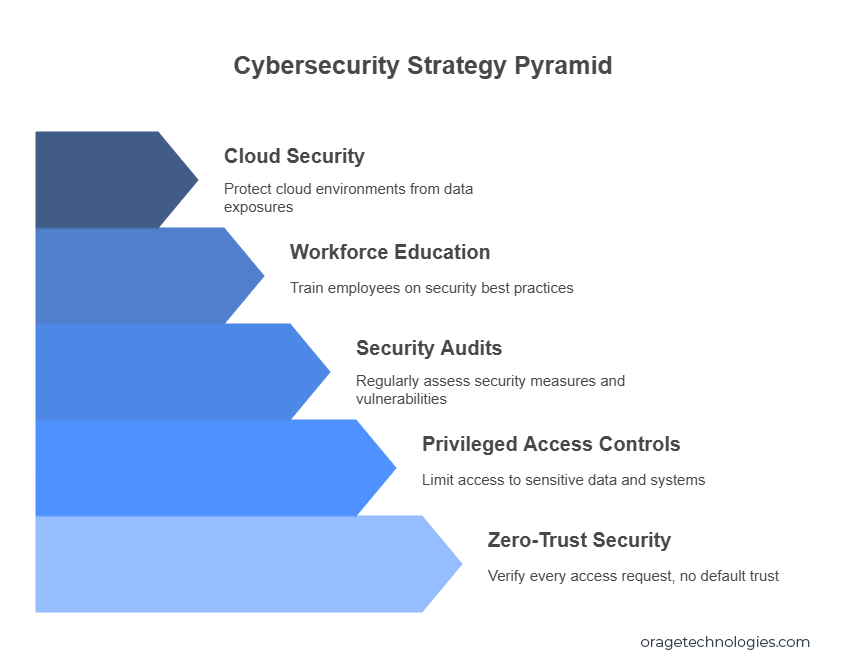
Divya Stuti, with over 5 years of experience in Digital Marketing & Content Writing, has a knack for turning complex Marketing strategies, trends, and jargon...
In the largest credential leak in the history of the internet, cybersecurity researchers have uncovered a staggering 16 billion usernames and passwords exposed in a massive online data breach. This colossal trove of sensitive data includes login credentials for some of the most widely used services in the world, such as Apple, Facebook, Google, GitHub, Telegram, VPNs, and even various government platforms. The scale and organization of the leaked data have cybersecurity experts sounding alarms across the globe.
What Happened In This Biggest Data Breach?
The breach was not caused by a centralized hack on a particular company. Instead, the data appears to be a collection of credentials harvested by infostealer malware and compiled into massive, unsecured databases.
In total, the Cybernews team discovered 30 different datasets, each containing between tens of millions to billions of records. According to Aras Nazarovas, a key researcher on the Cybernews team, the number and scale of these datasets point to a major shift in how cybercriminals operate.
“The increased number of exposed infostealer datasets in the form of centralized, traditional databases may be a sign that cybercriminals are moving away from previously popular alternatives such as Telegram groups,” Nazarovas said.
Cybersecurity researcher Bob Diachenko of SecurityDiscovery.com confirmed the findings and emphasized that although many users see names like Apple and Google in the headlines, these companies themselves were not breached.
“There was no centralized data breach at any of these companies,” Diachenko stated. “Credentials we’ve seen in infostealer logs contain login URLs to Apple, Facebook, and Google login pages.”
A Blueprint for Cybercriminals

Researchers warn that this is more than just another breach- it’s a blueprint for cybercrime at an unprecedented scale. With credentials neatly organized and searchable, attackers can now more easily launch:
- Account takeovers
- Identity theft
- Targeted phishing attacks
- Wire fraud
- Ransomware attacks
“This is not just a leak,” researchers noted. “It’s a blueprint for mass exploitation… This is fresh, weaponizable intelligence at scale.“
The credentials are not limited to one type of service. The leaked data includes logins for:
- Social media accounts (Facebook, Instagram, Telegram)
- Developer platforms (GitHub)
- Email and communication (Google, Apple)
- VPN services
- Government websites
The exposure of such diverse data types indicates a lack of cybersecurity hygiene and highlights how pervasive infostealer malware has become.
Where Did the Data Come From?
According to the report, the databases were most likely compiled using various strains of infostealer malware. These malicious programs infiltrate users’ devices, extract login data, and send it back to a command center controlled by attackers. The data is then compiled and, sometimes accidentally, exposed through unsecured cloud platforms.
The researchers found that most of these databases were temporarily accessible through unsecured Elasticsearch and object storage instances. That means anyone with a simple query or scanning tool could have stumbled upon them.
“Unprotected databases continue to be the most common cause of data leaks,” Cybernews wrote. “Many organizations still don’t understand the shared responsibility model of cloud services.”
How Bad Is It?
To put this in perspective, the global internet population is estimated to be around 5.5 billion people. With 16 billion credentials leaked, it is likely that many individuals have multiple compromised accounts.
The fact that only one of the 30 discovered datasets had been previously reported shows how underreported and underestimated the infostealer epidemic really is.
That last dataset contains 184 million records. Cybernews noted that this “barely scratches the top 20” of what their team discovered.
What Cyber Experts Say About This Data Breach?
Here we have gathered some of the opinions of the industry experts:
Darren Guccione (CEO, Keeper Security):
“This password leak is an apt reminder of just how easy it is for sensitive data to be unintentionally exposed online.”
Guccione warned that this may only be the beginning. He advised both consumers and businesses to invest in password management solutions and dark web monitoring tools.
Evan Dornbush (CEO, Desired Effect and former NSA cybersecurity expert):
“It doesn’t matter how long or complex your password is. When an attacker compromises the database that stores it, they have it.”
Dornbush emphasized the danger of password reuse. If a user uses the same password across multiple services, a single leak could compromise them all.
George McGregor (VP, Approov):
“This kind of massive leak is the first domino, leading to a cascade of potential cyberattacks.”
He added that the leak “highlights what we already know—user identities are already widely available to hackers.”
Javvad Malik (Lead Security Advocate, KnowBe4):
“Cybersecurity is a shared responsibility. Organizations need to protect users, and people need to remain vigilant.”
He encouraged users to use strong, unique passwords and enable MFA (Multi-Factor Authentication) wherever possible.
Paul Walsh (CEO, MetaCert):
Walsh took a different stance. He highlights that is not a shared responsibility:
“That’s pure BS from security vendors who still don’t know how to protect their customers from phishing attacks and then blame people for not becoming security pros.”
He criticized the failure of user education and advocated for a more technological approach such as zero-trust URL authentication.
What Should You Do?
If you’re concerned that your data may be part of the leak, here are some immediate steps you can take:
- Check your email and usernames on HaveIBeenPwned?
- Use Google’s Password Checkup tool to find compromised logins.
- Invest in a reputable password manager like 1Password, Keeper, or Bitwarden.
- Enable multi-factor authentication (MFA) on all critical accounts.
- Avoid reusing passwords across multiple sites.
- Keep your devices protected with anti-malware software.
Organizational Responsibility

This incident also serves as a wake-up call for companies. Organizations should:
- Adopt zero-trust security models
- Implement privileged access controls
- Conduct regular security audits
- Educate their workforce on security best practices
- Secure their cloud environments to prevent accidental exposures
Guccione summarized the issue perfectly:
“The fact that the credentials are of high value for widely used services carries with it far-reaching implications. It’s time for consumers and organizations to get serious about digital hygiene.”
Final Thoughts
The leak of 16 billion credentials is not just a wake-up call, it’s a deafening alarm bell. While tech companies, researchers, and governments work on long-term solutions, users must take action now to protect themselves. Don’t wait for an identity theft notification or a drained bank account.
Change your passwords. Use unique logins. Secure your devices. And stay alert. Because in today’s world, cybersecurity isn’t optional. It’s survival.
FAQ
1. What is a data breach?
Data breach is a cybercrime in which someone accesses, shares, or steals your private information without your consent.
2. Can I check if I’ve been in breach?
You can check by using HaveIBeenPwned, Google Password Checkup, or Firefox Monitor.
3. What happens if I’m part of a breach?
Your accounts across different platforms and banks might be at risk. Change passwords, activate 2FA and monitor everything.
4. Is it illegal to breach data?
Data breaches are criminal acts in most countries, including the U.S.
5. What’s the safest password method today?
Using a password manager + 2FA. Even better if the site supports passkeys..
Also Read: AEO vs SEO: Is Answer Engine Optimization Taking Over SEO?

Divya Stuti, with over 5 years of experience in Digital Marketing & Content Writing, has a knack for turning complex Marketing strategies, trends, and jargon into interesting and easy to digest blog posts. Whether she’s breaking down the SEO, Social Media or decoding campaigns, Divya knows how to make marketing feel exciting and easy to understand. Armed with a sharp eye for strategy and a storyteller’s instinct, she writes with clarity, creativity, and just the right dose of wit.
More Posts

